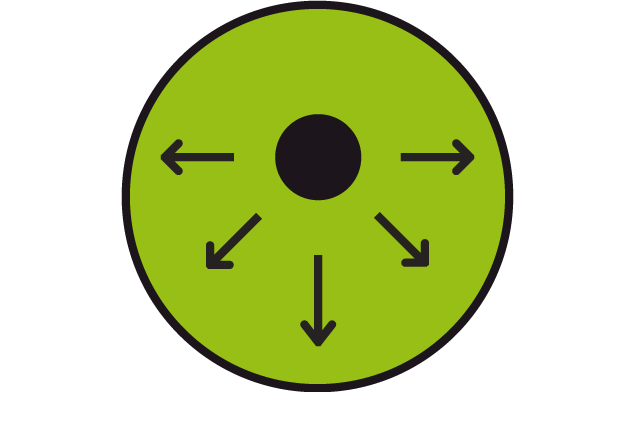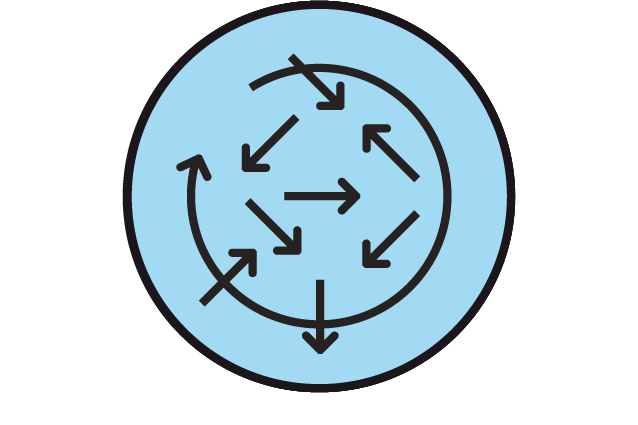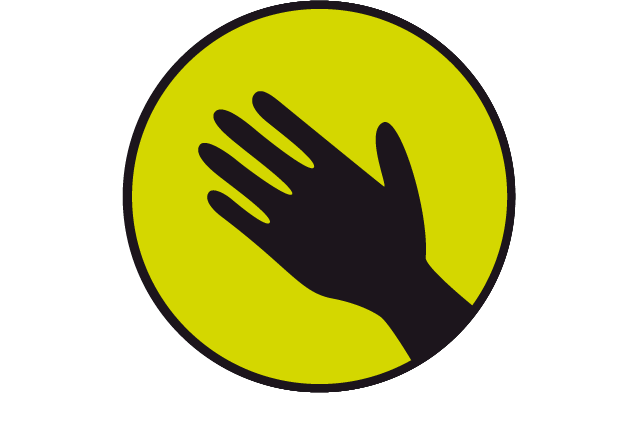
communication
Find out more
Shaping communication
Based on the insight that communication spaces are always also learning spaces, the American futurologist and consultant Dr. David D. Thornburg defined four prototypical forms of communication and learning and symbolized them through the terms: Mountain Top, Cave, Campfire and Watering He (see below). With the help of these communication metaphors, schools and other educational institutions should be able to become more aware of which forms of learning they want to support and which spaces or - in the case of digitally supported communication - technologies are needed.
The Danish architect and designer Rosan Bosch developed the system further, added the category Hands on and symbolized the forms of communication with pictograms.
Types of learning and communication
MOUNTAIN TOP

One to many
- Oral presentations, live or digital performances, e. g. readings, webinars, telephone connections and similar orientations
- Typical use: presentation in front of a group, personally or through the use of digital media
CAVE

personal learning environment
- Physical and digital, individually selected learning locations for retreat and concentrated work. Individual rooms, libraries, home offices, 3rd places.
- Typische use: undisturbed learning, working alone, being concentrated, working quietly
CAMPFIRE

One to many, in turn
- Semistructured, collaborative physical and digital learning worlds, e.g. discussion groups, meetings and online communication
- Typical use: group work, interdisciplinary team work, listening to others, exchanging ideas, discussing
WATERING HOLE

Many to many
- Informal gathering, physical and digital, e.g. cafeterias, playgrounds or break rooms, halls and corridors, wikis and social collaboration platforms
- Typical use: working in small groups, teamwork, listening to others, everyone contributes
HANDS ON

Tactile experience supplemented by Rosan Bosch
- Enhance physical and sensual experiences to deepen positive learning goals, e.g. playing, exploring and testing
- Important elements: touch, grasp, feel, experiment, build
Rosan Bosch is the Managing Director of Rosan Bosch Studio, based in Copenhagen with branches in Chicago and Barcelona. Her work ranges from exhibition design to the interior of schools and innovation centres. Current projects include the Academy For Global Citizenship in Chicago, the Montessori School in Landau and the Children's Library in Billund.
Further information can be found at https://rosanbosch.com/
Dr. David D. Thornburg founded the Thornburg Center, based in Lake Barrington, Illinois, USA, dedicated to the use of new technologies in schools and adult education. Under the name 'holodeck', borrowed from science fiction, he experiments with rooms that can be flexibly adapted to the respective usage situation.
Further information can be found at www.edutopia.org

The contents and graphics on this page were taken from the New Work Order study "Creative Learning Environments" by trend researcher Birgit Gebhardt, published in October 2016. The study can be ordered free of charge from IBA publications.

